
Rhizanthella, commonly known as underground orchids, is a genus of flowering plants in the orchid family, Orchidaceae and is endemic to Australia. All are leafless, living underground in symbiosis with mycorrhizal fungi. The inflorescence is a head of flowers held at, or just above the ground but mostly covered by soil or leaf litter and little is known about the mechanism of pollination.
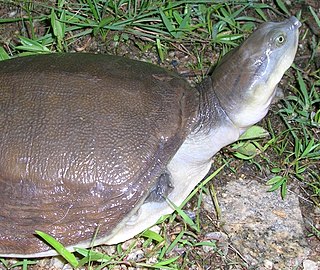
Lissemys is a genus of softshell turtles in the subfamily Cyclanorbinae of the family Trionychidae. The genus is indigenous to southern Asia.
Gardner's spiny-rat is a spiny rat species found in Bolivia and Brazil.
The Kulina spiny-rat or Javari spiny rat, is a spiny rat species found in Brazil and Peru.
Patton's spiny-rat is a spiny rat species found in Brazil and Peru.
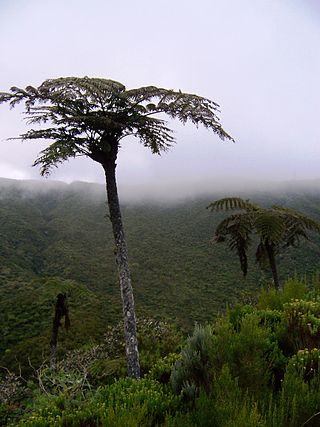
Cyathea is a section in the subgenus Cyathea.

Cyathea is a subgenus in the genus Cyathea.

Psychotria is a genus of flowering plants in the family Rubiaceae. It contains 1,645 species and is therefore one of the largest genera of flowering plants. The genus has a pantropical distribution and members of the genus are small understorey trees in tropical forests. Some species are endangered or facing extinction due to deforestation, especially species of central Africa and the Pacific.

Proechimys is a genus of South American spiny rats of the family Echimyidae. All species of the genus are terrestrial. In the lowland Neotropical forests, Proechimys rodents are often the most abundant non-volant mammals. They are recognizable by reason of their elongated heads and long rostra, large and erect ears, narrow and long hind feet, and tails always shorter than head-and-body lengths. The dorsal pelage comprises a mixture of expanded, varyingly stiffened spines — hence the vernacular name of spiny rats — and soft hairs.

Alex George's taxonomic arrangement of Banksia was the first modern-day arrangement for that genus. First published in 1981 in the classic monograph The genus Banksia L.f. (Proteaceae), it superseded the arrangement of George Bentham, which had stood for over a hundred years. It was overturned in 1996 by Kevin Thiele and Pauline Ladiges, but restored by George in 1999. A recent publication by Austin Mast and Kevin Thiele suggests that it will soon be overturned again.
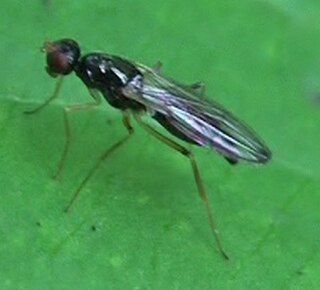
The Strongylophthalmyiidae are a small family of about 80 species of slender, long-legged flies, the majority of which occur in the Oriental and Australasian regions. They are divided into two genera, the monotypic Southeast Asian genus Nartshukia Shatalkin, 1993 and Strongylophthalmyia Heller, 1902. The relationships of the group are obscure; formerly the genus Strongylophthalmyia was classified with the Psilidae, and some recent classifications place it within the Tanypezidae. Little is known of their biology, but many species seem to be associated with rotting bark.
Banksia gardneri var. gardneri is a variety of Banksia gardneri. As an autonym, it is defined as encompassing the type material of the species. It is native to the Southwest Botanical Province of Western Australia.

Banksia gardneri var. brevidentata is a variety of prostrate shrub that is endemic to the south-west of Western Australia.
Cladocyclus is an extinct genus of marine ichthyodectiform fish from the middle Cretaceous. It was a predatory fish of about 1.20 metres (3.9 ft) in length.
Neonothopanus is a genus of three species of fungi in the agaric family Omphalotaceae. The genus was circumscribed in 1999. The type species N. nambi is found in Australia, South America, Central America, and Malaysia, while N. gardneri is found in South America. Both of these species are bioluminescent. N. hygrophanus, found in central Africa, was added to the genus in 2011.

The Noronha skink is a species of skink from the island of Fernando de Noronha off northeastern Brazil. It is covered with dark and light spots on the upperparts and is usually about 7 to 10 cm in length. The tail is long and muscular, but breaks off easily. Very common throughout Fernando de Noronha, it is an opportunistic feeder, eating both insects and plant material, including nectar from the Erythrina velutina tree, as well as other material ranging from cookie crumbs to eggs of its own species. Introduced predators such as feral cats prey on it and several parasitic worms infect it.
Neonothopanus gardneri, locally known as flor de coco, is a bioluminescent fungus native to Goiás, Piauí and Tocantins states in Brazil.
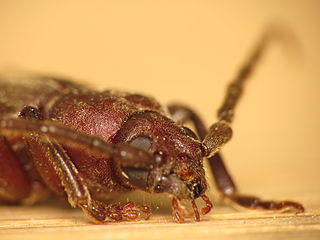
Asemini is a tribe of beetles in the subfamily Spondylidinae, containing the following genera and species:

Fundulopanchax is a genus of killifish living in near-coastal fresh water streams and lakes in Western Africa. All species were previously biologically classified as members of the genus Aphyosemion, with the exception of Fundulopanchax avichang, F. gresensi and F. kamdemi, which were all scientifically described after the major revision of the Aphyosemion complex.
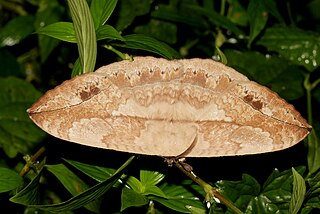
Eupterote is a genus of moths in the family Eupterotidae. It was first described by Jacob Hübner in 1820.













